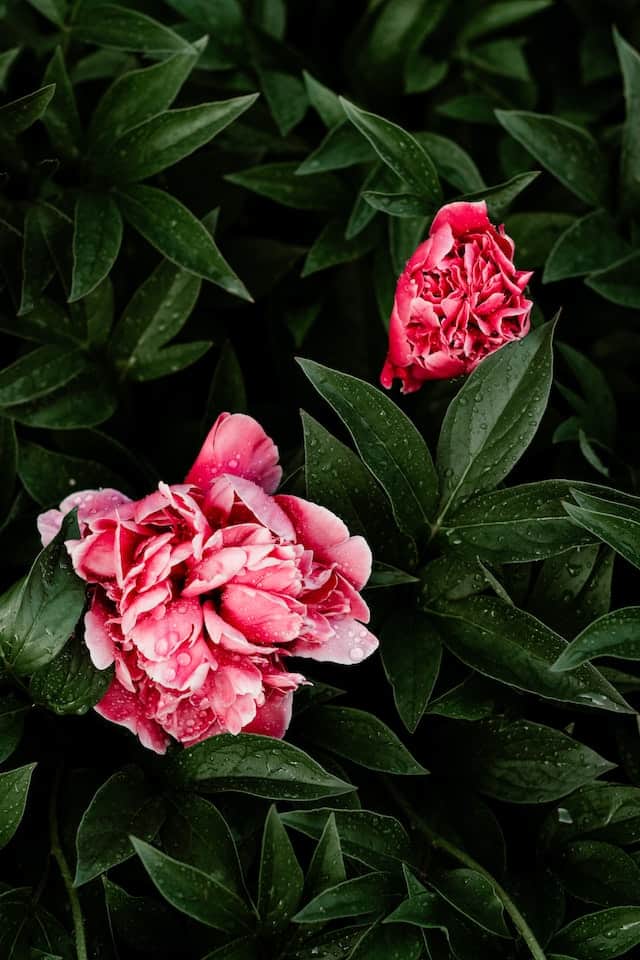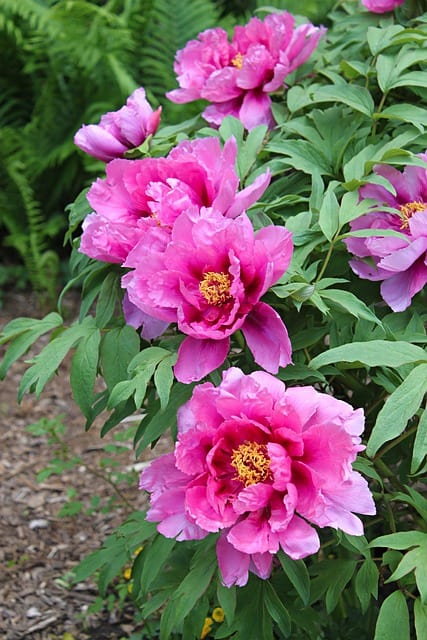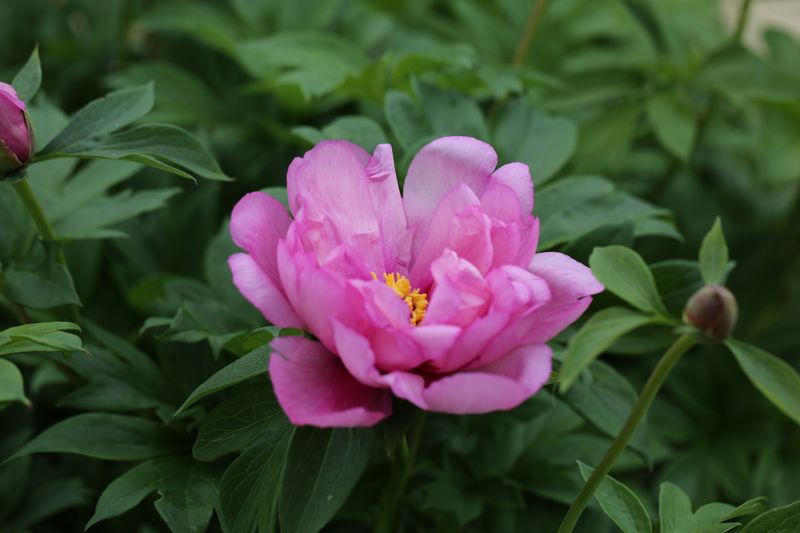In this guide, we’ll explore the ideal conditions for growing peonies, including soil composition, sunlight requirements, and companion plants, while also discussing how to care for these lovely blooms. So, let’s dive right in!
Understanding Peonies: A Brief Overview

Peonies are long-lived perennials that come in various types, including herbaceous peonies, tree peonies, and intersectional peonies. Their enchanting blooms, available in shades of pink, white, red, and yellow, are not only stunning but also attract pollinators like bees and butterflies, making them a wonderful addition to eco-friendly gardens.
Peonies require a bit of preparation and patience, but the rewards are monumental once they begin to bloom. Proper placement in your garden can significantly affect their growth and blooming success.
Choosing the Right Location

Sunlight Requirements
One of the foremost considerations for planting peonies is sunlight. Peonies thrive in full sun, so choosing a location that receives at least 6 to 8 hours of direct sunlight each day is crucial. While they can tolerate partial shade, too much shade can lead to leggy growth and fewer blooms. When selecting a spot, observe your garden throughout the day to identify areas that enjoy ample sunlight.
Tip: Morning sun is particularly beneficial for peonies as it dries off dew quickly, helping to prevent fungal diseases.
Drainage and Soil Conditions
Peonies prefer well-draining soil, which is another important aspect of their placement. Heavy, waterlogged soil can lead to root rot, ultimately harming your plant. Aim for soil that is rich in organic matter, with a pH level between 6.0 and 7.0.
To ensure good drainage, consider the following:
Elevated Areas: Planting on a slight slope can naturally provide better drainage.
Soil Amendments: If your soil is clay-heavy, mix in compost or well-rotted manure to enhance its structure and fertility.
Microclimates
In many gardens, there are various microclimates due to factors such as nearby structures, trees, or water bodies. Pay attention to these nuances; for instance, a wall that absorbs sunlight during the day can radiate warmth in the evenings, creating a more favorable environment for your peonies.
If your climate is particularly severe, with harsh winters or scorching summers, consider planting peonies near a structure that will provide some protection from extreme frost or intense heat.
Companion Planting with Peonies

Choosing the right companions for your peonies can enhance not just their growth but also their aesthetic appeal. Here are some suggestions:
Low-Growing Plants
To showcase the grandeur of your peonies, consider planting low-growing plants nearby. Varieties like ground cover sedums or creeping thyme can create a soft carpet that’ll beautifully frame the towering peonies without competing for attention.
Herb Plants
Herbs like chives, mint, or oregano can thrive near peonies and add beauty as well as functionality. Moreover, they can deter pests that might otherwise harm your peonies. Just ensure that the herbs chosen do not overpower the peony’s growth.
Perennials for Contrast
To create a visually appealing garden, integrate other perennials with different bloom times. Daisies, irises, or even roses can add depth and enrich your garden’s landscape. Be mindful of spacing; peonies spread over time, and allowing enough room for growth is vital for maintaining each plant’s health.
Planting Techniques for Success

Timing Your Planting
The best time to plant peonies is in the fall, typically between late September and early November, or in early spring when the ground is workable but before the plant has started its active growth. Fall planting allows the roots to establish themselves in cooler temperatures before winter sets in.
How To Plant Peonies
Digging the Hole: Prepare a hole that is at least 18 inches wide and deep. This gives the roots plenty of space to expand.
Spacing: If planting multiple peonies, space them approximately 3 to 4 feet apart; this prevents overcrowding and allows each plant to thrive.
Placement Depth: When placing the root in the hole, ensure the eyes (the small, fleshy buds) are facing upward. They should be about 1 to 2 inches below the soil surface. Planting them too deep can hinder blooming.
Backfill Carefully: As you backfill the hole, gently tamp down the soil to remove air pockets, ensuring good contact with the roots.
Watering After Planting
After planting, water your peonies thoroughly. This is crucial for helping the soil to settle around the roots. For the first several weeks, keep the soil slightly moist, but be cautious not to overwater, as peonies dislike sitting in wet soil.
Caring for Your Peonies

Fertilization
While peonies can thrive in relatively poor soil due to their deep-root systems, they can benefit from the occasional fertilization in early spring. Use a balanced fertilizer (like a 10-10-10 formula) or one high in phosphorus to encourage flowering. Avoid late-season fertilization, as this can lead to excessive leaf growth at the expense of blooms.
Pruning
Peonies do not require extensive pruning, but a little maintenance goes a long way. In the fall, after the foliage has died back, cut the stems down to about 3 inches above the ground. This helps prevent disease and allows new growth to emerge robustly in spring.
Support
Some peony varieties can become top-heavy as they bloom. Using plant supports can prevent stems from bending or breaking under the weight of blossoms. Consider using decorative cages or rings that complement the plants’ aesthetics.
Common Mistakes to Avoid
Ignoring Spacing Needs
As previously mentioned, peonies need room to grow. Ensure they aren’t crowded by other plants, as this can lead to poor air circulation and increased risks of disease.
Incorrect Planting Depth
Planting peonies too deep or too shallow can significantly impact their blooming potential. The general rule is to ensure that the eyes are covered by no more than 2 inches of soil.
Over-Watering
While new peony plants need consistent moisture, established peonies prefer to dry out between watering. A good rule of thumb is to allow the top 2 inches of soil to dry before watering again.
Neglecting Pest Control
While peonies are generally hardy, they can be affected by pests like aphids or botrytis blight. Regularly inspect your plants and consider organic pest control methods if infested. Good airflow and spacing will also help minimize pest issues.
Conclusion: Embracing the Beauty of Peonies
In summary, the joy of planting peonies lies in understanding their specific requirements for light, soil, and space. Choosing the right location ensures these incredible blooms thrive for years, rewarding you with a stunning display and delightful fragrance that epitomizes the beauty of spring and summer.





